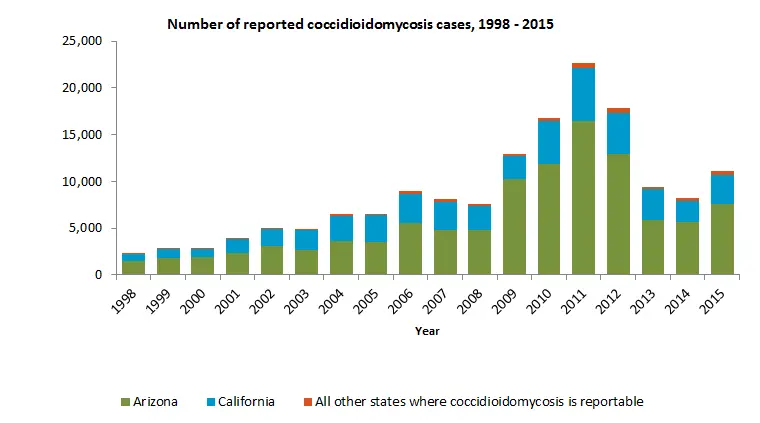by Editorial Staff | July 12, 2017
- Health & Wellness
- Healthy Air
- Science
Valley fever, or coccidiodomycosis, is a lung disease that is on the rise in the U.S., especially in the Southwest. Cases of valley fever have gone up 400 percent from 1998-2015, according to the Centers for Disease Control and Prevention. Why the increase? New research has spotlighted one possible explanation – increased dust storms due to climate change.
The National Oceanic and Atmospheric Administration (NOAA) recently published a new study that linked the increase in valley fever cases with the surge in the number of dust storms from climate change. The study noted that the incidents of dust storms have more than doubled over two decades, leaping from 20 to 48 between 1988 and 2011. According to the NOAA, dust storms have clearly increased because of the warmer temperatures and increasing drier climate in the Southwest. While recognizing that they needed more research to be certain, they found that these dust storms were the strongest explanation so far for the rise in valley fever. Further evaluation is needed on the more recent trend.
Since we are now in the middle of dust storm season, we answered a few questions you may have about valley fever.
What is valley fever and where does it come from?
Coccidiodomycosis, or valley fever, is a fungal infection found in the lungs, although, in a small number of people, it spreads outside of the lungs and affects other parts of the body. People get the disease when they inhale fungal spores that are common in the soil in the Southwest. Fortunately, valley fever is not contagious and can't be spread from person to person. Valley fever's symptoms – cough, chest pain, shortness of breath and fever – make it hard to distinguish from other common lung diseases. It's often misdiagnosed and treated as bacterial pneumonia. Many people with valley fever have no or minimal symptoms.
Who gets valley fever?
The fungus that causes valley fever grows in the soil in the Southwestern U.S., northern Mexico and parts of Central and South America. Those who live in or travel to Arizona, California, New Mexico, Nevada, Utah and Texas are most likely to contract the disease. Those at an increased risk include older adults, those with HIV, diabetics, solid organ transplant recipients and people taking immune-suppressing medication therapy.
Is it serious? And how is it treated?
Most individuals with coccidioidomycosis do not require specific treatment, although doctors may prescribe antifungal medications for those with severe symptoms. Sometimes health professionals might not immediately diagnosis patients with valley fever because its symptoms are so similar to other lung diseases. This is especially true for patients who traveled to the affected region and later consult with healthcare providers back home who are less familiar with the disease. Some people have symptoms that persist for months after resolution of the disease, while others may require prolonged treatment.
How can I avoid getting valley fever?
Check with your doctor if you are traveling to or live in areas where dust storms occur, especially if you have risk factors that might place you at higher risk or if you work outdoors. Always avoid being outdoors in a dust storm, as the dust can affect your breathing even if it does not cause valley fever.
Blog last updated: October 15, 2025



